Cold weather and your roof
April 9, 2025 at 6:00 a.m.By Great Roofing.
Learn what happens to your roof and home when the weather drops below freezing.
Everyone wants their home to be a safe place, and it all comes down to the security of what is called the building envelope. This term refers to all the physical aspects separating your home’s interior, conditioned environment and the unconditioned environment outside. There are many parts to the building envelope, including but not limited to your walls, roof, gutters and insulation. These different systems and products must withstand a wide range of conditions, from hot weather and UV exposure in the summer to cold, wet winters. One of the biggest challenges right now is extreme cold, with parts of the world experiencing below-zero temperatures. So, our experts at Great Roofing have put together a quick guide to help you understand how your building envelope reacts to these conditions.
Shingle and cold weather
It’s important to note that manufacturers test their shingles to meet standards set by organizations like ASTM (American Society for Testing and Materials) and UL (Underwriters Laboratories). These tests simulate freezing temperatures and rapid temperature changes to ensure the shingles remain flexible, durable and resistant to cracking. To keep it simple, shingles that pass these tests are rated for specific temperature ranges, ensuring they perform well during the coldest months of the year. This is why it’s essential to work with a certified contractor you trust — so we can share our knowledge and help you choose the right shingles for your home and climate.
Now, let’s look at how different types of shingles handle the cold:
- Asphalt shingles: These are flexible in most weather, but in the extreme cold, they can become brittle. That means they’re more likely to crack if stressed, like during a high wind or a falling branch.
- Metal roofs: Metal stays strong in the cold and is great at shedding snow, but it can contract as temperatures drop, which sometimes causes popping sounds. Don’t worry — that’s normal!
- Natural slate: Slate performs exceptionally well in cold weather due to its density and durability. However, improperly installed slate can shift or crack when subjected to freeze-thaw cycles. Regular inspections are key to keeping it in top shape.
- Natural wood shake: While wood shakes are naturally insulating, they can absorb moisture. In freezing temperatures, this moisture can cause the shakes to expand and contract, leading to cracking or splitting over time. Treating the wood and ensuring proper ventilation can help extend its lifespan.
- Concrete tile: Concrete tiles are highly durable, even in freezing weather. However, like natural slate, they can be affected by freeze-thaw cycles if water seeps into small cracks. Concrete tiles are heavy, so proper structural support is crucial to avoid additional stress on your roof in the winter and maintain structural integrity.
Cold weather tip: Avoid walking on your roof in freezing temps, regardless of the material. Shingles and tiles are more fragile in the cold and you could accidentally cause damage.
Flat roofs in cold weather
Flat roofs, often found on commercial buildings and some modern homes, have unique challenges in extreme cold.
- Membrane roofs (EPDM, TPO, PVC): These materials are designed to withstand freezing temperatures but can shrink slightly when the temperature drops. Over time, this contraction can cause stress on the seams and flashing.
- Cold weather concern: Flat roofs are more prone to snow and ice accumulation since they don’t shed snow like sloped roofs. The added weight can cause stress on the roof structure, increasing the risk of leaks or even collapse in very extreme cases.
Cold weather tip: Ensure your flat roof’s drainage system is clear of debris and ice. In areas with heavy snowfall, consider professional snow removal to avoid overloading your roof.
Siding in the cold
- Vinyl siding: Cold temperatures can make vinyl siding more prone to cracking, especially if there’s impact, like from flying debris or ice buildup.
- Fiber cement or wood siding: These materials are sturdier in the cold but can still be affected by moisture and freeze-thaw cycles, which cause small cracks or gaps over time.
Cold weather tip: Keep an eye on siding seams and any visible cracks. Small gaps can let in cold air, driving up your heating bill!
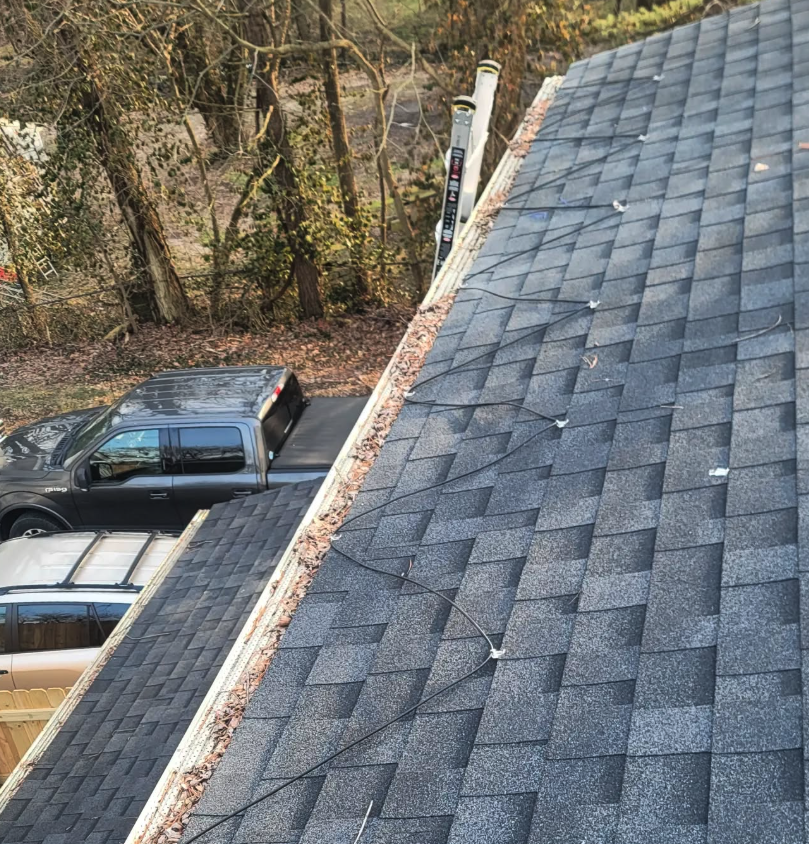
Gutters and ice dams
When snow melts on your roof but freezes in your gutters, it can create ice dams. These block water from draining properly, forcing it back under your shingles and potentially causing leaks. A common sign of ice dams is icicles hanging from the eaves of your roof, especially if they are larger than usual or have formed after heavy snow or ice buildup.
Heat cables (pictured to the right) may help to prevent ice dams and keep your roof safe during the winter months.
Cold weather tip: Clear your gutters before heavy snow hits and if you suspect you have an ice dam contact your local contractor ASAP.
Installation matters — especially in cold weather
While materials like shingles, siding and gutters are designed to withstand cold temperatures, proper installation is key to ensuring they perform as expected. Even the highest-quality materials can run into issues if not installed according to manufacturer guidelines, particularly in freezing conditions. For example, improperly sealed shingles can allow water to seep in, leading to leaks and other damage.
If you suspect installation issues or if your roof or siding isn’t performing well in the cold, it’s important to reach out to a trusted contractor who knows how to properly install materials for winter weather. A thorough inspection can help prevent bigger problems down the road.
The bottom line and final cold weather tip
Your roof and siding are built to protect your home, even in harsh winters, but the cold can make some materials behave differently. The good news? With regular maintenance and proper care, your home or business can handle even the coldest temps.
Final cold weather tip: Be proactive! Schedule a free inspection with a trusted contractor like Great Roofing in the springtime to check on your roof!
Original article and photo source: Great Roofing
Have a question? AskARoofer.
Find your local roofing contractor in the RoofersCoffeeShop® Contractor Directory.

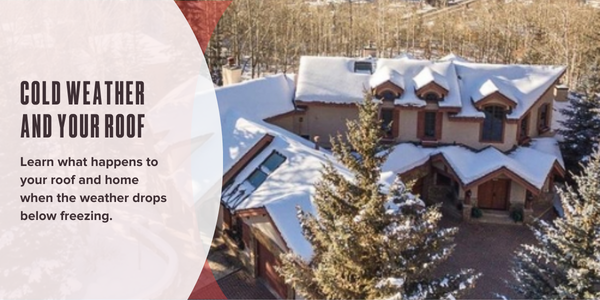
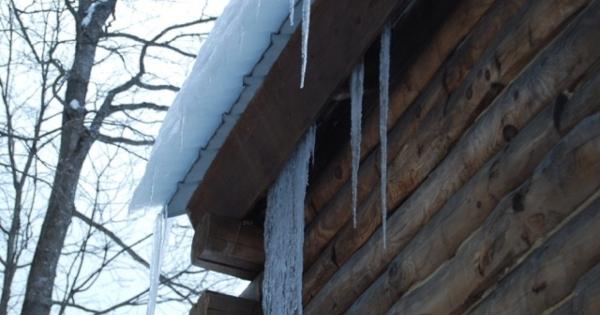
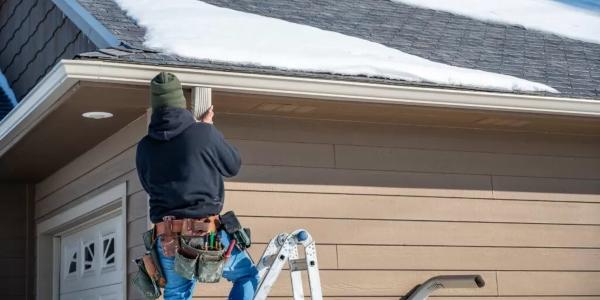
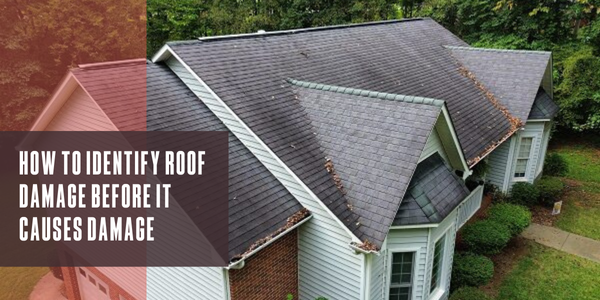



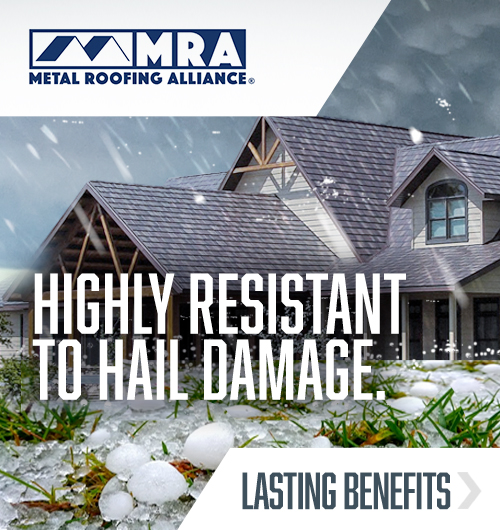

Comments
Leave a Reply
Have an account? Login to leave a comment!
Sign In